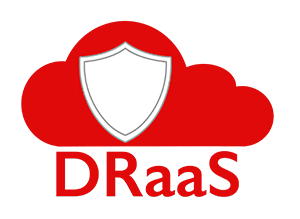 |
Disaster Recovery as a Service (DRaaS) |
Disasters, being unpredictable and frequent, pose a persistent threat to business continuity. In light of the $313 Billion USD economic losses due to global catastrophes in 2022, businesses are now focused more on recovering from a disaster than merely anticipating one.
The unsettling revelation from these disasters highlights the dire need for a solid disaster recovery plan. With over 60% of surveyed entities lacking a fully documented DR plan, and a significant number having experienced downtime of critical applications, the necessity for a reliable disaster recovery service is evident.
ScerIS Disaster Recovery Service: ScerIS’s Disaster Recovery as a Service (DRaaS) embodies a proactive approach towards disaster preparation. Utilizing Constant Data Protection (CDP) technology, our service offers an extra shield of protection for on-premise servers or those hosted in ScerIS cloud service data centers. CDP ensures a constant full backup of identified servers, providing an enhanced peace of mind and a robust mechanism to mitigate both natural and man-made disasters.
DRaaS Protection: Our DRaaS safeguards servers ensuring that in an event where a server at the primary data center becomes inaccessible, recovery and accessibility are promptly restored. Employing storage device (block/disk/LUN) backup technologies, highly available hardware platforms, and Tier 3 data centers, ScerIS DRaaS guarantees that recovery of your server services can be executed at any time. This service alleviates the need for duplicating hardware, software, licenses, or developing skills for disaster recovery configuration or management, as ScerIS DRaaS takes on the responsibility of configuring, maintaining, and monitoring the DRaaS 24×7 to ensure it’s recovery-ready at all times.
Recovery Time and Point Objectives: With a Recovery Time Objective (RTO) of 4 hours and a Recovery Point Objective (RPO) as short as 15 minutes based on the network connectivity, our DRaaS stands as a reliable fortress against data loss. The continuous data protection service throughout each day allows ScerIS DRaaS to offer a full recovery point that is never older than 15 minutes for both ON Cloud and OFF Cloud customers, ensuring a near real-time data recovery.
ScerIS Cloud Locations: Hosted by Equinix, one of the most esteemed operators in the industry, our clouds are situated in data centers that uphold our promise of 99.99% availability. The ScerIS computing platform extends the focus on availability utilizing redundant power, network, and management technologies along with top-notch hardware ensuring your recovery site is always primed to take over and sustain your business computing needs.
Simplified DR Configuration: ScerIS DRaaS epitomizes simplicity and support essential for successful disaster recovery. Through an intuitive process, we specify the servers requiring protection and soon your servers are fortified against impending disasters. The flexibility in choosing the primary (source) site location, whether on-premise or in the ScerIS data center, coupled with our geographically dispersed recovery sites and Tier 3 datacenter reliability, manifests into a 99.99% SLA promise.
Service Description: ScerIS DRaaS automatically manages recovery point retention, aiding in optimizing protection service and minimizing costs. The location of recovery data is selectable from a list of ScerIS data centers worldwide, with charges based on the total monthly allocated storage volume in Gigabytes assigned to protected servers. In the event of a recovery to the ScerIS data center, standard server charges will commence for any servers operating in the ScerIS Cloud for the duration they are active.
Whether your servers are located in a private “On-Premise” data center (Off Cloud), or already in the ScerIS data center, or between ScerIS data centers (On Cloud), our DRaaS includes 24×7 support through the ScerIS support ticketing system or phone support, ensuring a seamless recovery process whenever needed.
In the unforeseen event that disrupts your primary computing platform services, a simple notification to ScerIS operations initiates the recovery process. Our team engages the automated recovery software, provisions the server(s), and once the recovery server is a booted server with verified operating system console access, ScerIS notifies you that the server has been recovered—marking the completion of the Recovery Time Objective.
Why ScerIS Managed DRaaS? ScerIS DRaaS morphs the daunting task of disaster recovery into a simplified, flexible, and reliable process. Testing ensures basic connectivity and parameters for DRaaS are set up, followed by an initial synchronization of data and verification of the created recovery point. Post verification, a complete end-to-end test is conducted to ensure your servers are protected, offering you a

